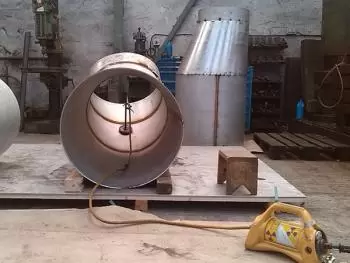
Industry is one of the fields in which nuclear energy is used. Some examples of the applications of nuclear energy in modern industry are as follows:
-
Improvement of industrial processes.
-
Measurements
-
Automation.
-
Quality control of raw materials from industrial processes (cement plants, thermal power plants, oil refineries, etc.).
-
Quality control of mass-produced products
In series production it is used as a prerequisite for the complete automation of high-speed production lines.
In the industrial field, irradiation with intense sources is frequently used to improve the quality of certain products (special plastics, sterilization of single-use products, etc.).
In addition, experiments with tracers are also carried out to obtain accurate and detailed information on the status of industrial equipment to qualify for the extension of its useful life.
Nuclear sources for industrial use do not usually produce radioactive waste in the country that uses them, but in the country of the supplier. Once these sources are useless, the commercial firm of the supplier country withdraws them when they are replaced.
Use of radioisotopes as tracers
The fact that small amounts of radioactive substances can be measured quickly and accurately, means that radioisotopes are used to follow processes or analyze the characteristics of these processes. These substances are called tracers.
Tracers are radioactive substances that are introduced into a certain industrial process. This action makes it possible to detect the trajectory of these substances thanks to their radioactive emission. In this way, it is possible to investigate various variables of the industrial process (flow rates, leaks, leaks, etc.).
Some of the industrial applications of nuclear energy in which tracers are used are as follows:
-
Process research, being able to control the parameters of the ventilation systems (flow rates, ventilation efficiency)
-
For mixtures, checking the degree of homogeneity, the mixing time and the performance of the mixer
-
Industrial maintenance processes, studying the transport of materials through pipes (leaks or leaks and flows)
-
Detection of wear and corrosion, determining the degree of wear of materials (engines) and the corrosion of processing equipment.
Tracers also have a scope in nuclear medicine and human health.
What is a tracer isotope?
In chemistry and biochemistry, a tracer isotope is used to help understand chemical reactions and interactions. In this technique, one or more atoms of the molecule are replaced by an atom of the same chemical element, but of a different isotope.
Since the substitute atom has the same number of protons, it will behave in much the same way as the original atom and, with few exceptions, will not interfere with the reaction you want to investigate.
However, the difference in the number of neutrons implies that it will be possible to detect it differently than the other atoms of the same element.
Quality control by scintigraphy
Gamma radiography is an indispensable quality control technique for the verification of welds in pipes and for the detection of cracks in aircraft parts.
Industrial radiography allows volumetric testing of a material. The difference in thickness in each of the sections of a material causes a different penetration of the X or gamma radiation to which it is subjected.
To carry out this test, a source of penetrating nuclear radiation is placed next to the material to be examined. On the other side is a radiation detector. In this way, a representative two-dimensional image of the part is obtained.
Radiographic interpretation consists of the analysis of the images obtained by means of industrial radiography, in order to detect and evaluate possible defects in the inspected materials and thus ensure the required quality of said inspected material or component.
Use of radiation in other industrial processes
Gamma radiation ionizes matter and creates free radicals, which are the intermediate species for many chemical reactions. Once radiation (cobalt-60 sources) is applied to the monomers with which plastics are made, the formation of large polymer chains is induced.
From here, if the irradiation of the material is continued, special plastics with a high degree of catenary crosslinking are formed, which improves its properties as a thermal and electrical insulator. Thus, radiation-induced degradation of some polymers constitutes a useful property for certain types of packaging.
Nuclear energy is also applied in the production of wire and cables insulated with polyvinyl chloride degraded with gamma radiation. Radiation increases resistance to thermal and chemical attacks.
Another important product is radiation-degraded polyethylene foam. Polyethylene foam is used in thermal insulation, impact padding, flotation vests, and gamma-radiation solidified wood-plastic composites.


